ZHCSJH9A August 2019 – August 2019 TPS56C230
PRODUCTION DATA.
- 1 特性
- 2 应用
- 3 说明
- 4 修订历史记录
- 5 Pin Configuration and Functions
- 6 Specifications
- 7 Detailed Description
- 8 Application and Implementation
- 9 Power Supply Recommendations
- 10Layout
- 11器件和文档支持
- 12机械、封装和可订购信息
6.6 Typical Characteristics
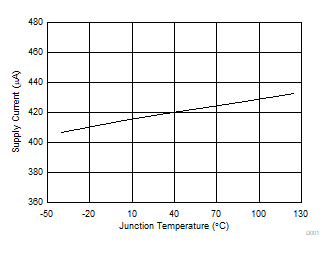
| VEN = 5 V |
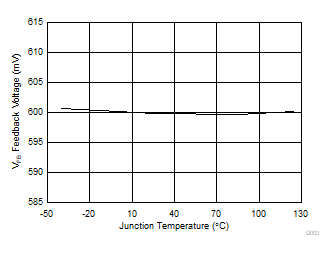
1.
Figure 3. Feedback Voltage vs Junction Temperature 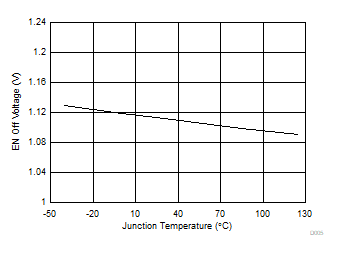
1.
Figure 5. Enable Off Voltage vs Junction Temperature 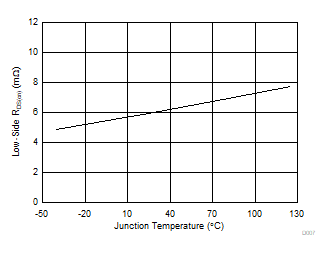
1.
Figure 7. Low-Side RDS(on) vs Junction Temperature 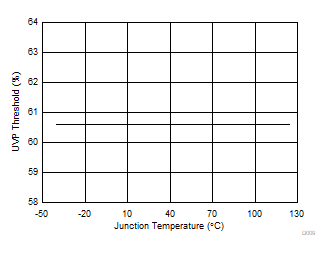
1.
Figure 9. UVP Threshold vs Junction Temperature 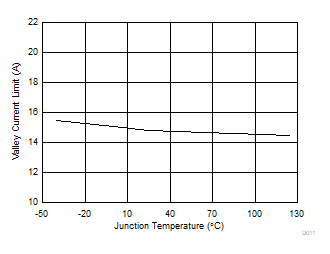
1.
Figure 11. Valley Current Limit vs Junction Temperature 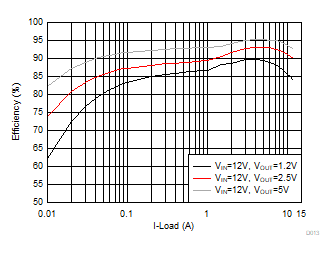
1.
Figure 13. Efficiency vs Load Current, Eco-mode 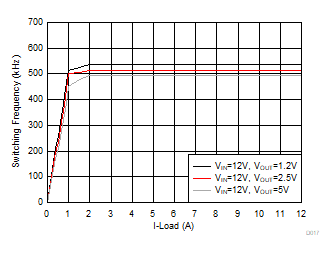
1.
Figure 15. Switching Frequency vs Load Current, Eco-mode 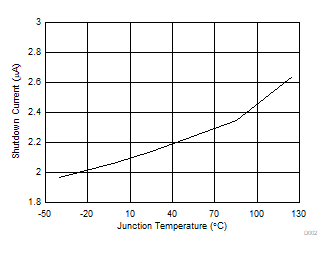
| VEN = 0 V |
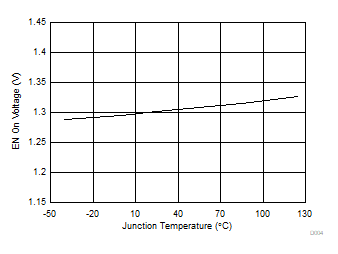
1.
Figure 4. Enable On Voltage vs Junction Temperature 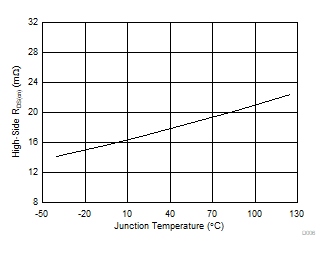
1.
Figure 6. High-Side RDS(on) vs Junction Temperature 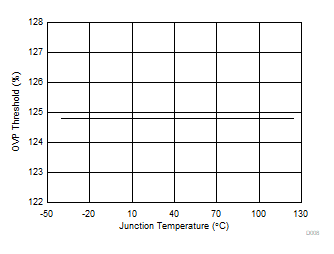
1.
Figure 8. OVP Threshold vs Junction Temperature 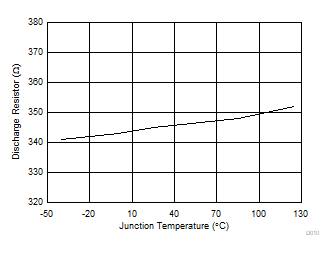
1.
Figure 10. Discharge Resistor vs Junction Temperature 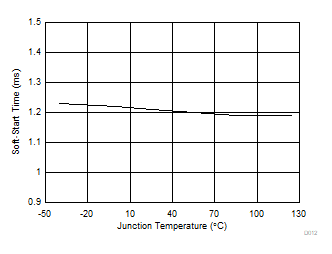
1.
Figure 12. Soft-Start Time vs Junction Temperature 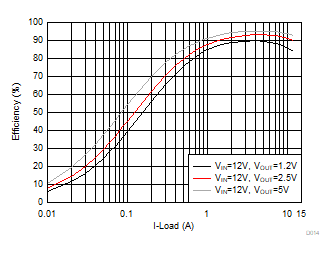
1.
Figure 14. Efficiency vs Load Current, FCCM 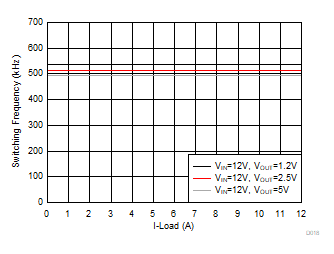
1.
Figure 16. Switching Frequency vs Load Current, FCCM